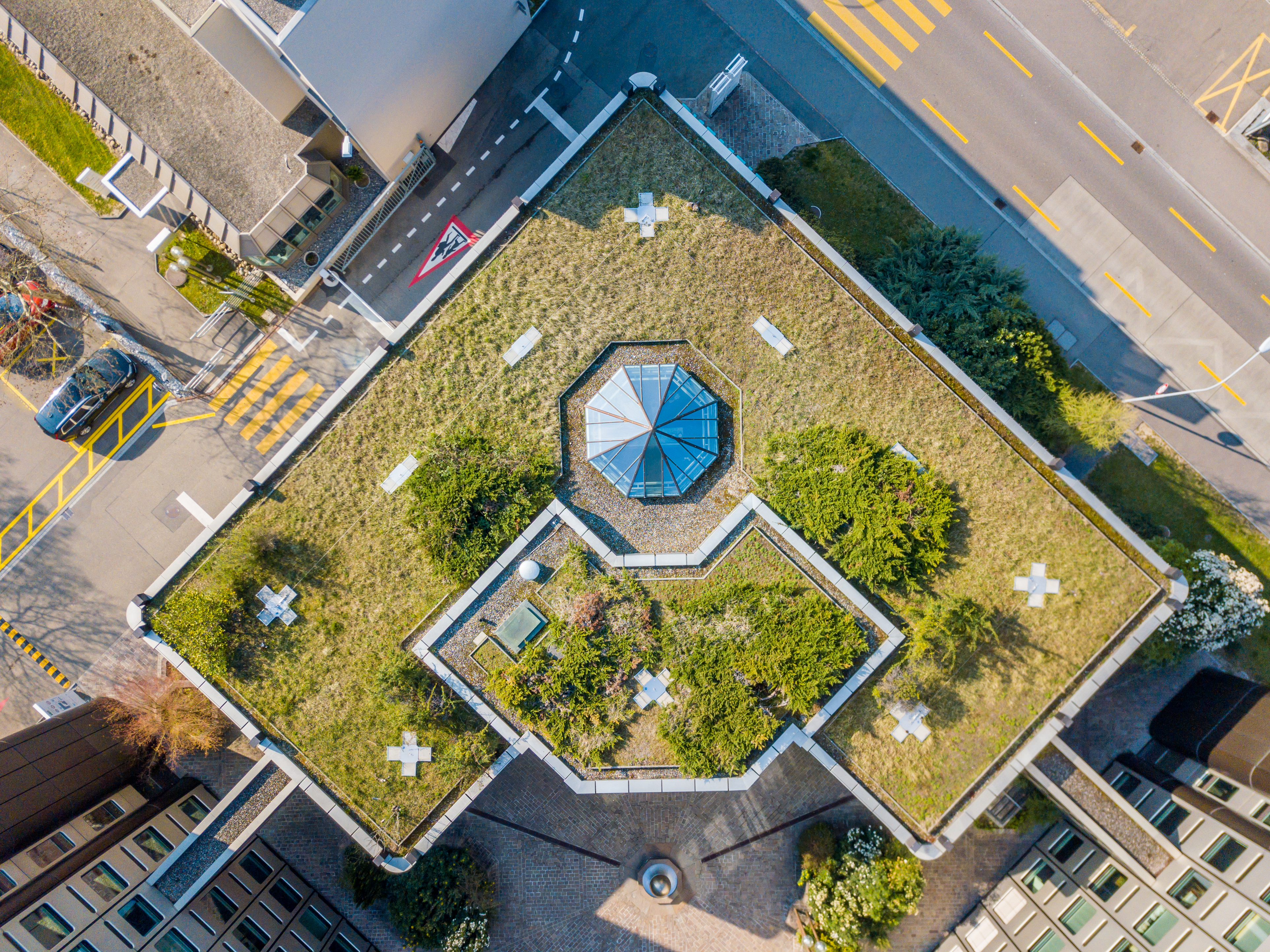
With increased awareness of the impact that human activity is having on the planet, sustainability is of growing concern in the built environment. Surveyors must therefore keep up with the latest developments – not least because sustainability is a mandatory level 1 competency for all APC and AssocRICS candidates.
Air conditioning and R22: formerly used in air conditioning systems, the refrigerant R22 is now banned in the UK because of its high ozone depletion potential (ODP). The ban includes topping up existing systems with R22 or replacing parts in those that contain the substance. While such systems can remain in use until they are obsolete, they can then be converted to use a different gas such as R4410A, or replaced with an entirely new system.
Building Research Establishment Environmental Assessment Method (BREEAM): this is a sustainability rating system for new and operational buildings, and candidates should be sure they know what the acronym stands for. The system is based on nine weighted criteria, including energy, water, transport and waste, that are then used to apply a BREEAM rating from unclassified to outstanding. There are two stages of assessment – design and post-construction – where an interim and final certificate, respectively, are issued.
Conference of the Parties (COP) 26: the most recent UN climate change conference, held in Glasgow in November 2021, was attended by 120 world leaders and more than 40,000 participants, and concluded with the signing of the Glasgow Climate Pact. The pact focuses on four key actions: mitigation and reducing emissions; adaptation to help those affected by climate change; finance to enable countries to meet climate goals; and collaboration on more global action.
Display Energy Certificate (DEC): certificates are required in public buildings of more than 250m2 and must be shown in a prominent and visible place. They provide an energy efficiency rating from A, highest, to G, lowest. DECs are valid for one year if a building is more than 1,000m2, or for ten years if a building is 250-1,000m2. The penalty for not showing a DEC is £500.
Environmental, social and governance (ESG) factors: these are the three key areas on which socially responsible investors focus. This means that their decisions are informed not only by financial considerations and risk but also by environmental and social factors. The ESG agenda is a natural progression of corporate social responsibility (CSR), taking its concern with accountability and adding a further dimension of analysis and reporting.
The ESG agenda is a natural progression of corporate social responsibility, taking its concern with accountability and adding a further dimension of analysis and reporting
Future Homes Standard: the UK government is set to introduce this standard by 2025, with the aim of future-proofing new-build homes by installing low-carbon heating (e.g., heat pumps) and LED lighting. This will be achieved through changes to Parts F and L of the Building Regulations, which deal with ventilation and with conservation of fuel and power respectively. For existing homes, RICS has created a consumer guide to help individuals lower their domestic carbon emissions.
Green loan: such financing is becoming increasingly popular for projects that contribute to environmental objectives, such as improving energy performance certificate (EPC) ratings or upgrading to wind or solar power. Lenders should follow the Loan Market Association's Green Loan Principles.
Heat pumps: these devices take heat from the air into buildings to warm the internal environment, using a small amount of electricity in the process. No fuel is burnt and so no greenhouse gases are released as a result, assuming the electricity is renewably generated. There are two types of heat pump – air source and ground source – and both are highly efficient because they produce more energy in the form of heat than they use as electricity. Heat pumps are set to become more popular as the UK government has announced plans to ban the installation of gas boilers in new homes by 2025 under the Future Homes Standard.
Infrastructure Act 2015: this legislation introduced a number of significant measures, including community rights to purchase shares or equitable interest in large renewable energy projects and additional safeguards relating to shale gas fracking, and a new carbon offsetting regime.

Jurisdiction: surveyors need to be aware of differences between the UK nations on sustainability. For example, the proposed changes to Part L of the Building Regulations do not apply in Scotland. Similarly, unlike those in England, places of worship and listed and historic buildings north of the border need an EPC if they are let or sold, while buildings there of more than 1,000m2 require both an EPC and a section 63 action plan on energy efficiency improvements
Kyoto Protocol: adopted by 192 countries in December 1997, the protocol took effect in February 2005. It set binding emission reduction targets for 37 countries, equating to an average 5% reduction compared to 1990 levels by 2012. It has since been replaced by the Paris Agreement in 2015, adopted at the Glasgow Climate Pact in 2021.
Part L of the Building Regulations: this concerns the conservation of fuel and power, with guidance on compliance being given in the four parts of accompanying Approved Document L1A, L1B, L2A and L2B. Changes to Part L come into force in June, with the aim of reducing carbon dioxide emissions by 30% for residential dwellings and 27% for non-residential buildings.
Minimum Energy Efficiency Standards (MEES): the standards were introduced to set a minimum EPC rating of E for rented residential and commercial buildings. From April 2023, this threshold will also apply to existing leases for commercial buildings. There are a number of complex exemptions that apply in various circumstances.
National Planning Policy Framework (NPPF): the latest iteration of the NPPF, published in 2021, includes a specific section on achieving sustainable development. It establishes a presumption in favour of this, basing its understanding on the 1987 report Our Common Future where sustainable development is defined as meeting current needs without compromising the ability of future generations to meet theirs.
Part O of the Building Regulations: relating to overheating in residential dwellings and buildings such as care homes and student accommodation, this also takes effect in June. The key requirements are to limit unwanted solar gains in the summer months, and provide adequate means of removing heat from internal spaces.
Passivhaus: this voluntary energy efficiency standard aims to create buildings that use substantially less energy for heating than those constructed in line with current Building Regulations. Key features of Passivhaus design for both commercial and residential buildings include high levels of airtightness, minimal thermal bridging, optimisation of passive solar gain, mechanical ventilation with heat recovery, and high levels of insulation.

Quadruple bottom line: where the triple bottom line is economic, social and environmental, this adds a fourth quality, namely culture. Considering culture entails that, as well as being financially successful and socially and environmentally responsible, organisations also need to reflect on the needs of their employees and the ways that they work.
RICS Valuation – Global Standards (Red Book Global Standards) 2022: the most recent updates for RICS Red Book Global became effective on 31 January 2022. The most significant changes related to the requirement for more detailed commentary on sustainability, resilience and ESG matters in VPGA 8 Valuation of Real Property Interests. There is also a reference to the current edition of Sustainability and ESG in commercial property valuation and strategic advice, RICS guidance note.
Streamlined Energy and Carbon Reporting (SECR): this framework replaced the former Carbon Reduction Commitment (CRC) scheme in 2019. It requires companies of 250 or more employees, turnover of more than £36m or a balance sheet of more than £18m to report on their energy consumption and greenhouse gas emissions by submitting financial accounts to Companies House.
Task Force on Climate-related Financial Disclosures (TCFD): established in 2015, the task force aims to develop voluntary guidelines for disclosures based on governance, strategy, risk management and metrics and targets to help the public and investors assess investment risk relating to climate change. Its 32 members are individual representatives of international financial institutions, regulators and supervisors, and central banks.
UN Sustainable Development Goals (SDGs): in 2015, the UN published a list of 17 SDGs as a part of the 2030 Agenda for Sustainable Development. These include eliminating poverty, taking climate action, ensuring good health and well-being, providing quality education, generating affordable and clean energy, and creating sustainable cities and communities. With the built environment representing up to 70% of global wealth, RICS has published guidance on adopting the SDGs in professional practice.
'With the built environment representing up to 70% of global wealth, RICS has published guidance on adopting the SDGs in professional practice'
Value the Planet: this is the RICS campaign to encourage firms and members to implement the SDGs. The organisation has published a checklist to promote sustainable business, recommending actions that businesses can take. These include considering brownfield rather than greenfield sites for development, and carrying out life-cycle assessments to assess different project options and inform decision-making. The RICS has also published a responsible business framework, detailing how an ethical approach to financial, environmental and social activities can ensure success and mitigate risks.
Water-sensitive urban design (WSUD): integrating water cycle management into the planning and urban design stages can involve dealing with water demand and supply, waste water, pollution, rainfall, run-off, flooding and water pathways, to improve resilience and ensure resource security.
Xeriscaping: a method of landscaping that reduces the need for irrigation, this can be used in areas where the water source is limited or unreliable. It is based on the principle of selecting plants that help conserve water, and it can contribute to creating more sustainable green spaces.
You: having an awareness of sustainability and the impact of your work as a surveyor on the built environment is essential. There are many topics outside the scope of this article that you may need to be aware of, depending on your area of practice.
Net zero: this is where greenhouse gas emissions are balanced by their removal from the atmosphere. The UK government has a current target to achieve net zero by 2050 by following a ten-point plan for a green industrial revolution, including advancing offshore wind, greener buildings, green finance, and investment in carbon capture and storage.
Jen Lemen FRICS is co-founder of Property Elite
Contact Jen: Email
Related competencies include: Sustainability

